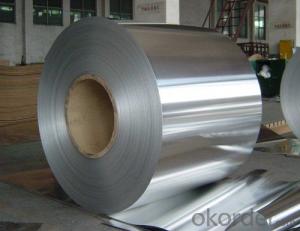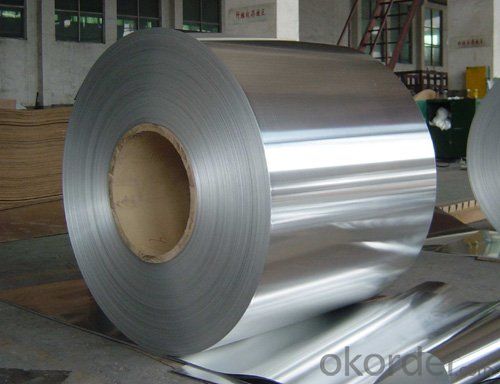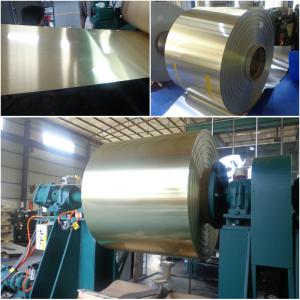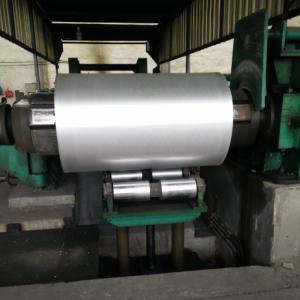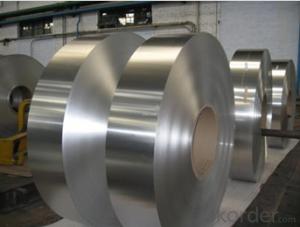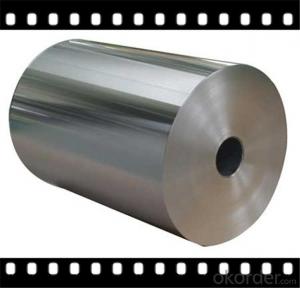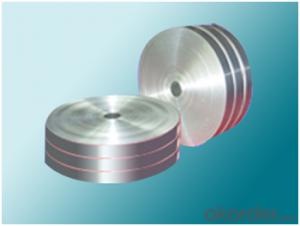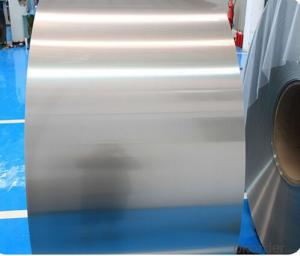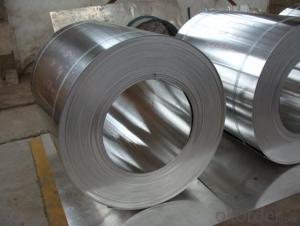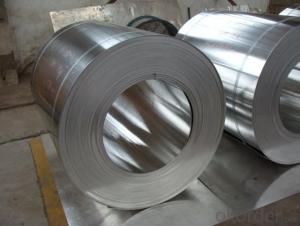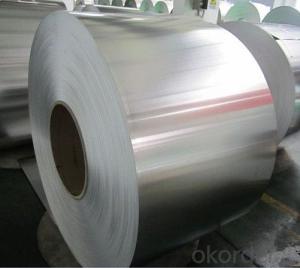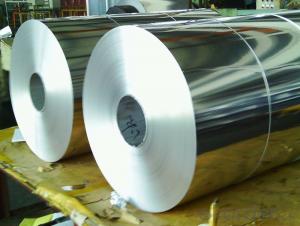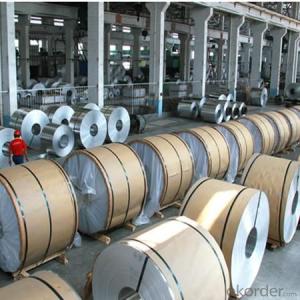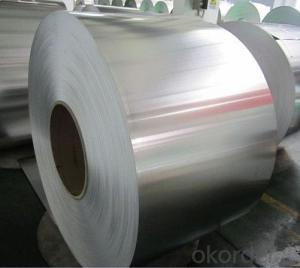Matte Black Aluminum Coil - 5052 Temper H14 H24 0.4mm 0.5mm 0.6mm Thickness Aluminum Roll
- Loading Port:
- Shanghai
- Payment Terms:
- TT OR LC
- Min Order Qty:
- 5 m.t.
- Supply Capability:
- 6000 m.t./month
OKorder Service Pledge
OKorder Financial Service
You Might Also Like
Specification
5052 Temper H14 H24 0.4mm 0.5mm 0.6mm Thickness Aluminum Roll
1050 1060 1070 1100 1235representative series aluminum plate is also known as pure aluminum, in the series in 1xxx series belongs to all the alumina quantity of a maximum number of series. Purity can achieve 99.00% above
3xxx series aluminum represents 3003 3004,3005, 3 A21 primarily. And can be called in the 3xxx series aluminum antirust aluminum production process more outstanding. The 3xxx series aluminum plate is by manganese as the main component. Content at 1.0-1.5 between. Is a rust-proof function better series. Conventional application in the air conditioning, the refrigerator, such as car in damp environment.
6xxx series represents 6061 mainly contain magnesium and silicon of two elements, so focused on the 4000 series and the advantages of the 5000 series 6061 is a cold treatment aluminum forging products, apply to fight against corrosion, oxidizing demanding applications.
Description
item | 1050 1060 1100 3003 Aluminum coil | |
Standard | GB/T3190-2008,GB/T3880-2006,ASTM B209,JIS H4000-2006,etc | |
Material | 1060,1050,1100 3003,3103,3004,3005,3105 5052, 5454,5754 | |
Size | Thickness | 0.5mm-3.5mm |
Width | 800-1500mm | |
Weight/Roll | About 1.5MT/3MT | |
Quality control | Mill Test Certificate is supplied with shipment, Third Part Inspection is acceptable. | |
Surface | Bright, polished, hair line, brush, checkered, embossed, etc | |
Trade terms | Price term | ,FOB, CNF, CIF, etc |
Payment Term | TT,L/C | |
MOQ | 2MT | |
20 GP Capacity | About 20-25MT | |
Delivery time | 1.The products will delivery immediately after receiving the payment. 2.According to the order quantity, prompt delivery. | |
Export to | Ireland,Singapore,Indonesia,Ukraine,Spain,Canada,USA,Brazil,Thailand,Korea,Iran,India,Egypt,Kuwait, Oman,Viet Nam, South Africa, Dubai, Russia, etc | |
Package | Stick blue film→plastic film→waterproof paper→1~2 tons on a export standard pallet(corner protection) | |
Application | 1)Further making utensil.2)Solar reflective film3)The appearance of the building4)Interior decorating:ceilings,walls,etc.5)Furniture cabinets6)Elevator decoraction7)Signs,nameplate,bags making.8)Decoration inside and outside the car9)Household appliances:refrigerators,microwave ovens,audio equipment,etc.10)The consumer electronics:mobile phones,digital cameras,MP3,etc. | |
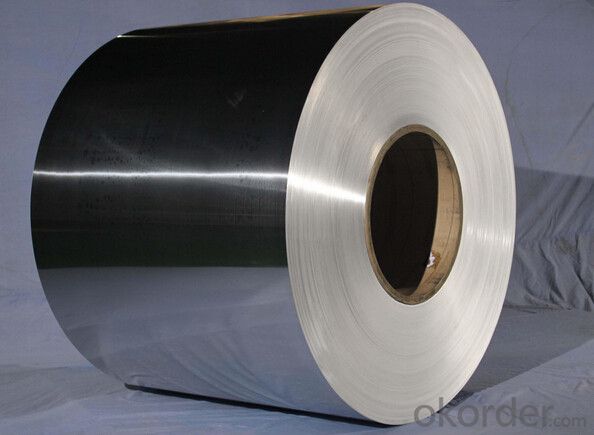
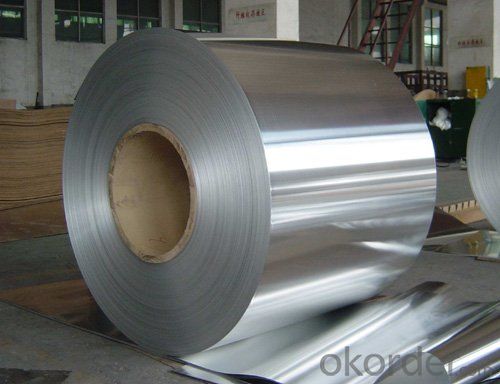
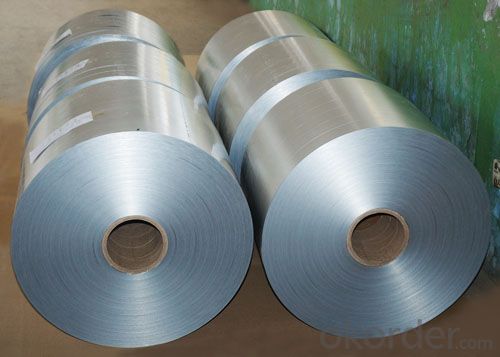
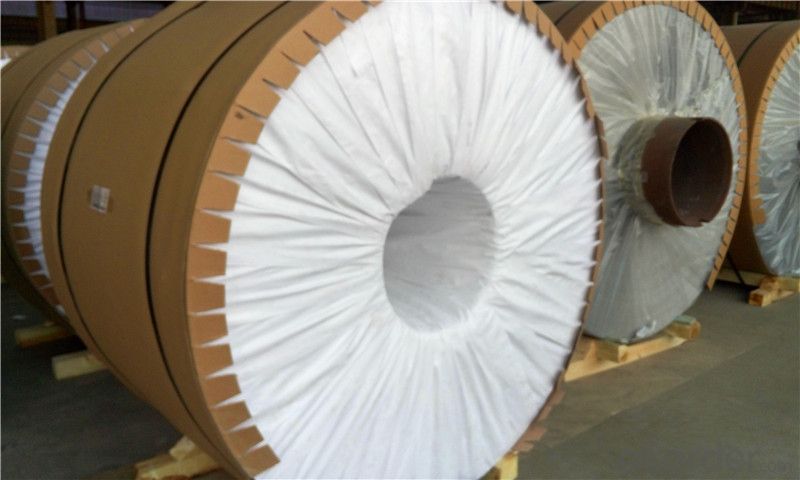
- Q: Are aluminum coils suitable for architectural roofing?
- Architectural roofing can benefit from the use of aluminum coils. Aluminum is widely used in construction due to its advantageous properties. Aluminum coils have multiple advantages for architectural roofing. Firstly, aluminum is lightweight, making it easier to handle and install. This is particularly useful for large-scale roofing projects where weight is a significant concern. Moreover, aluminum possesses excellent corrosion resistance. It naturally develops a protective oxide layer that defends against rust and other forms of corrosion. This ensures that aluminum coils are durable and long-lasting, allowing the roofing to endure various environmental conditions over time. Furthermore, aluminum is highly malleable, allowing for easy shaping into different roof profiles and designs. This grants architects and designers greater artistic freedom when creating visually appealing roofing systems. Another advantage of aluminum coils for architectural roofing is their reflective properties. Aluminum has a high solar reflectance, meaning it reflects a noteworthy amount of sunlight and heat away from the building. This aids in reducing cooling costs and improving energy efficiency, making it an environmentally friendly choice. Lastly, aluminum is a recyclable material, further enhancing its sustainability and making it a desirable option for architectural roofing. It can be easily recycled without losing its valuable properties, lessening the environmental impact of the construction industry. To conclude, aluminum coils are indeed suitable for architectural roofing due to their lightweight nature, corrosion resistance, malleability, reflective properties, and recyclability. These attributes make aluminum an excellent choice for roofing projects, offering durability, aesthetic appeal, energy efficiency, and environmental sustainability.
- Q: How are aluminum coils cleaned before further processing?
- Aluminum coils are cleaned before further processing through a series of steps to ensure the removal of any contaminants or impurities. The cleaning process typically involves the use of chemical solutions and mechanical methods. Firstly, the coils are usually soaked in a degreaser or cleaner solution to dissolve and remove any oils, greases, or dirt that may be present on the surface. This step helps to eliminate any organic contaminants that could interfere with subsequent processes. After the initial soaking, the coils are often subjected to a high-pressure water rinse to further remove any remaining residues or particles. This step helps to dislodge and flush out any loosened contaminants from the surface of the coils. In some cases, a combination of chemical cleaning and mechanical scrubbing or brushing may be employed to effectively remove stubborn or baked-on contaminants. This method is particularly useful for coils that have been exposed to more severe environmental conditions or industrial processes. Once the coils have been cleaned, they are typically rinsed again to ensure the complete removal of any cleaning agents or residues. This is important to prevent any adverse effects or interference with subsequent processing steps. Overall, the cleaning of aluminum coils before further processing is crucial for achieving high-quality end products. It helps to ensure the removal of impurities, improve the surface finish, and enhance the overall performance and longevity of the finished aluminum products.
- Q: How are aluminum coils cut and shaped?
- Various methods and tools are utilized to cut and shape aluminum coils, depending on the desired size and shape. Slitting, shearing, and laser cutting are the most commonly employed techniques. Slitting is the act of dividing a wide coil into narrower strips. This procedure entails passing the coil through a series of circular blades that make precise cuts along its length. Thin aluminum strips are typically produced using this method, which can then be further processed or utilized in various applications. Shearing is another popular approach for cutting aluminum coils. It involves the use of a machine with a moving blade to slice through the coil. By applying pressure to the coil, a clean and straight cut is achieved. Shearing is commonly employed for cutting thicker aluminum coils and is ideal for creating straight cuts without deformations. Laser cutting is a more advanced technique used to cut and shape aluminum coils. It employs a high-powered laser beam to either melt or vaporize the metal along a predetermined path. This method offers exceptional precision and enables the creation of complex shapes and designs on the aluminum. Laser cutting is widely used in industries that require intricate and detailed cuts. Following the cutting process, various methods such as bending, rolling, stamping, or forming can be employed to further shape the aluminum coils. These techniques allow for the creation of different geometries and forms based on the specific requirements of the intended application. Overall, the cutting and shaping of aluminum coils involve a variety of techniques and tools, each suitable for different requirements. The choice of method depends on factors such as the coil's thickness, desired shape, and the level of precision necessary for the final product.
- Q: metals an aluminum can is made of, cast aluminum, 6160 aluminum, sheet aluminum
- the aluminum is alloyed with various metals to change the characteristics of the aluminum the link below shows a table showing the various chemical/metals added to aluminum to make different alloys
- Q: What are the different surface textures available for aluminum coils?
- There are several different surface textures available for aluminum coils, each with its own unique characteristics and applications. 1. Smooth: Smooth surface texture is the most basic and common type of finish for aluminum coils. It has a sleek and polished appearance, making it suitable for a wide range of applications such as architectural cladding, signage, and consumer electronics. 2. Stucco: Stucco texture features a raised pattern resembling small pebbles. This texture is achieved by embossing the surface of the aluminum coil, providing enhanced durability and resistance to scratches and dents. It is often used in applications where a more robust and decorative finish is desired, such as roofing, wall panels, and decorative trim. 3. Diamond: Diamond texture features a diamond-shaped pattern embossed onto the surface of the aluminum coil. This texture not only enhances the aesthetic appeal but also provides additional traction and slip resistance, making it ideal for applications such as flooring, stairs, and ramps. 4. Brushed: Brushed texture is achieved by mechanically brushing the surface of the aluminum coil, creating a linear pattern. This finish gives the aluminum a distinctive, satin-like appearance, making it popular for architectural applications such as interior wall cladding, furniture, and decorative elements. 5. Hammered: Hammered texture is achieved by hammering the surface of the aluminum coil, resulting in a unique and irregular pattern. This texture provides a rustic, handcrafted look, making it suitable for applications such as decorative accents, light fixtures, and furniture. 6. Perforated: Perforated texture involves creating a pattern of small holes or perforations on the surface of the aluminum coil. This texture allows for increased airflow, light transmission, and sound absorption, making it commonly used in applications such as ventilation systems, acoustic panels, and decorative screens. These are just a few examples of the various surface textures available for aluminum coils. The choice of texture depends on the specific requirements of the application, including aesthetics, functionality, and durability.
- Q: If the aluminum coil is 220 kg, 0.3 thick and 500 wide, how much is the coil diameter?
- With the outer diameter and inner diameter, you can know the volume. With the density and volume, we can calculate the weight. And with weight, we can know the length.
- Q: How do aluminum coils compare to other non-ferrous metals like titanium?
- Aluminum coils and other non-ferrous metals like titanium have distinct characteristics that differentiate them in terms of their properties and applications. While both metals are non-ferrous and share similarities such as excellent corrosion resistance and lightweight properties, they have several differences that set them apart. Firstly, aluminum is more commonly used and readily available compared to titanium. It is also more affordable, making it a cost-effective choice for many industries. Titanium, on the other hand, is relatively rare and expensive due to its complex extraction process, limiting its widespread use. In terms of strength, titanium is significantly stronger than aluminum. Titanium alloys possess exceptional strength-to-weight ratios, making them suitable for applications where high strength is a requirement, such as aerospace and military industries. Aluminum, although not as strong as titanium, is still widely used in various industries due to its good strength-to-weight ratio. Another key difference lies in their melting points. Titanium has a significantly higher melting point compared to aluminum, making it more resistant to high temperatures. This characteristic makes titanium ideal for applications involving extreme heat, such as aircraft engines and components for the chemical industry. Aluminum, on the other hand, has a lower melting point, making it more suitable for applications that require good thermal conductivity, like heat exchangers and electrical wiring. Furthermore, titanium has superior resistance to corrosion compared to aluminum. While aluminum is known for its excellent corrosion resistance, titanium surpasses it in terms of durability, especially in highly aggressive environments, such as saltwater or chemical exposure. This property makes titanium a preferred choice for marine applications, offshore structures, and chemical processing equipment. In summary, aluminum coils and titanium are both valuable non-ferrous metals with unique properties and applications. Aluminum is widely used due to its affordability, availability, and good strength-to-weight ratio, while titanium offers exceptional strength, high-temperature resistance, and superior corrosion resistance at a higher cost. Understanding their differences allows industries to choose the most suitable metal for their specific needs and requirements.
- Q: Some properties of aluminum are summarized in the following list.normal melting point 658°C heat of fusion 3.95 kJ/g normal boiling point 2467°C heat of vaporization 10.52 kJ/g specific heat of the solid 0.902 J/g°C Calculate the quantity of energy required to heat 1.58 mol of aluminum from 33°C to its normal melting point? In KJCalculate the quantity of energy required to melt 1.02 mol of aluminum at 658°C? In KJCalculate the amount of energy required to vaporize 1.02 mol of aluminum at 2467°C? In KJ
- Calculate the quantity of energy required to heat 1.58 mol of aluminum from 33°C to its normal melting point in KJ- 1.58 mol x 26.98 g/mol x 0.902 J/g°C x (658 - 33)°C x 1 kJ/1000 J = 24.03 kJ Calculate the quantity of energy required to melt 1.02 mol of aluminum at 658°C In KJ- 1.02 mol x 26.98 g/mol x 3.95 kJ/g = 108.7 kJ Calculate the amount of energy required to vaporize 1.02 mol of aluminum at 2467°C In KJ- 1.02 mol x 26.98 g/mol x 10.52 kJ/g = 289.5 kJ
- Q: Explain the differences between aluminum coil and aluminum foil when used in food packaging.
- <p>Aluminum coil and aluminum foil are both used in food packaging but serve different purposes. Aluminum coil is typically thicker and more rigid, used for making aluminum cans and containers. It provides a strong barrier against light, air, and moisture, which is crucial for preserving the quality and freshness of food. Aluminum foil, on the other hand, is thinner and more flexible, often used for wrapping food to protect it from contamination and to retain heat or cold during cooking or storage. It's also used for baking and roasting to prevent food from sticking to the pan or to add a crispy texture. While both materials are recyclable and provide a barrier against external elements, their specific applications in food packaging differ based on their physical properties and the needs of the packaging process.</p>
- Q: Can aluminum coils be painted or coated?
- Yes, aluminum coils can be painted or coated. The process involves preparing the surface, applying a primer, and then adding the desired paint or coating. This helps enhance the appearance, protect against corrosion, and improve durability.
Send your message to us
Matte Black Aluminum Coil - 5052 Temper H14 H24 0.4mm 0.5mm 0.6mm Thickness Aluminum Roll
- Loading Port:
- Shanghai
- Payment Terms:
- TT OR LC
- Min Order Qty:
- 5 m.t.
- Supply Capability:
- 6000 m.t./month
OKorder Service Pledge
OKorder Financial Service
Similar products
Hot products
Hot Searches
Related keywords
